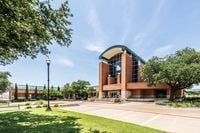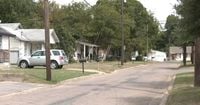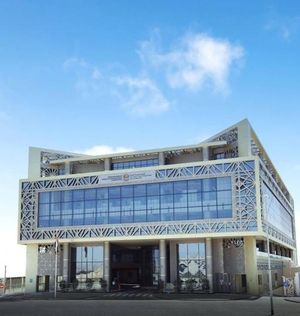Homeowners in two American communities are bracing for steeper property tax bills this year, as local governments in Old Bridge, New Jersey, and Hurst, Texas, approve significant increases to meet mounting budget pressures. The hikes, approved during recent council meetings, reflect a growing trend across the country: municipalities and school districts grappling with shrinking state aid, rising costs, and tough financial choices that are being passed on to residents.
In Old Bridge, New Jersey, the news has been especially jarring. On August 12, 2025, the Township Council convened after weeks of calls and letters from residents upset about a nearly 10% jump in their property tax bills for the 2025-26 fiscal year. For a home assessed at the township average of $157,373, the total property tax bill climbed about $900, reaching $9,950. The lion’s share of that increase—over $728—came from the school tax levy, which surged by 13.87%.
Mayor Debbie Walker made it clear at the meeting that the township itself was not the main driver of the spike. “Some people just don’t have that money to put out, and it’s not only senior citizens this tax increase is affecting. It’s affecting young families that just bought their homes,” Walker said, according to NJ.com. “The only thing we can control is our municipal tax. And I hate that we’re taking the blame for this very large increase because I wouldn’t do this to residents.”
Indeed, the municipal tax rate—over which the township has direct control—rose by only 1.58% this year. The real culprit, officials said, was the school district, which faced an $18 million deficit before approving its $185 million budget for the 2025-26 school year back in May. The district’s financial woes have been building for years, fueled by New Jersey’s revised school funding formula, which has steadily reduced state aid since 2018.
That formula, fully implemented for the first time last year, was designed to shift money from so-called "overfunded" districts to those that had historically received less. But the Old Bridge Board of Education argues that the system unfairly penalizes their community. The district has lost millions in aid, forcing it to sell property, close an elementary school, and eliminate about 85 staff positions. “There’s nothing left. We’ve been able to plug holes with reserves, but there are no more reserves,” board member Marjorie Jodrey said at the district’s May budget hearing, as reported by NJ.com. “We’re already operating on reduced staff and programs, and we still need to give Old Bridge students a good education.”
Rising expenses—including salaries, benefits, energy, and transportation—have only deepened the budget gap. This year, a 3% cut in state aid meant Old Bridge will receive about $23.6 million for the upcoming school year, $730,000 less than last year, according to state Department of Education figures. Without raising taxes, officials warned, the district would have been forced to consider drastic cuts: eliminating full-day kindergarten, closing more schools, reducing elementary art programs, and scaling back security coverage.
To help close the gap, the district applied for New Jersey’s Tax Levy Incentive Aid program, which provides additional funding to districts that increase their local tax levy. The application was approved earlier this month, offering some relief but also locking in higher taxes for residents. Meanwhile, student enrollment in Old Bridge has steadily declined over the past six years, dropping to about 8,000 students across 14 public schools—a trend that further affects funding under the state’s formula.
Old Bridge is not alone in its predicament. Across New Jersey, other districts facing steep aid cuts have resorted to similar measures, from raising property taxes to laying off staff and shuttering schools. In Ocean County, the Jackson School District recently filed a lawsuit, blaming the loss of two schools, 385 jobs, and major program cuts on what officials called the state’s “systemic and unconstitutional underfunding.”
While Old Bridge’s tax hike is driven largely by school funding challenges, the situation in Hurst, Texas, reflects a different but related set of pressures. On August 26, 2025, the Hurst City Council approved a 3.34% increase in the city’s property tax rate for the fiscal year 2025-26. The new rate, set at 61.1882 cents per $100 of assessed value (up from 59.1 cents), means that for a home valued at $400,000, the city tax bill will rise from $2,364 to $2,447.
The council also approved an $88 million budget, including a $46.5 million general fund supported by property taxes. At the same meeting, water and wastewater rates were bumped up by 2%, adding an average of $2.15 per month to residential bills starting October 1, 2025. One council member voted against both increases, arguing that she couldn’t support adding to constituents’ financial burdens.
City officials cited several factors for the budget and tax increases: rising employee health care costs, intense competition for public safety employees in the region, and general inflation. The city’s general fund budget for the current year was $44.6 million, so the new budget represents a notable jump. The council also preliminarily approved a $5.8 million Crime Control and Prevention District budget for the new year, funded by a half-cent sales tax.
Both Old Bridge and Hurst are emblematic of a broader challenge facing local governments nationwide. As state and federal support lags or declines, and as costs for everything from salaries to infrastructure continue to rise, municipalities and school districts are left with few options but to ask more of their residents. In some cases, like Old Bridge, these choices are made to preserve essential educational programs and services; in others, like Hurst, they’re made to maintain city services and keep up with inflationary pressures.
For residents, the impact is immediate and personal. In Old Bridge, the median household income was about $106,900 in 2023, according to the latest U.S. Census data. While that may sound comfortable, a nearly $1,000 increase in property taxes can strain budgets—especially for seniors on fixed incomes and young families who have just purchased their first home. As Mayor Walker put it, “Some people just don’t have that money to put out.”
In Hurst, the increases may seem more modest by comparison, but they still add up—especially when combined with higher water bills and other living costs. And with one council member openly dissenting, it’s clear that not everyone agrees on the best path forward. Yet, as city and school officials in both towns have argued, the alternatives—deeper cuts to staff, services, or programs—are often even less palatable.
As communities across the country wrestle with similar dilemmas, the stories unfolding in Old Bridge and Hurst offer a window into the difficult balancing act of local governance. Whether the answer lies in reforming state funding formulas, finding new sources of revenue, or simply tightening belts further, one thing is certain: the debate over how to pay for essential public services isn’t going away anytime soon.





